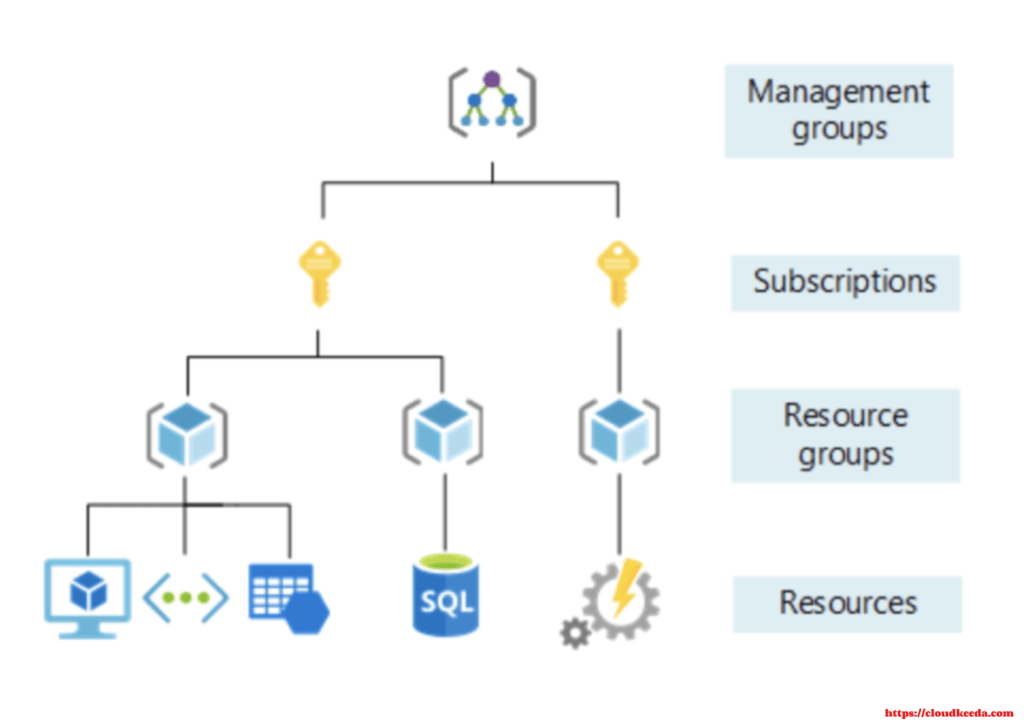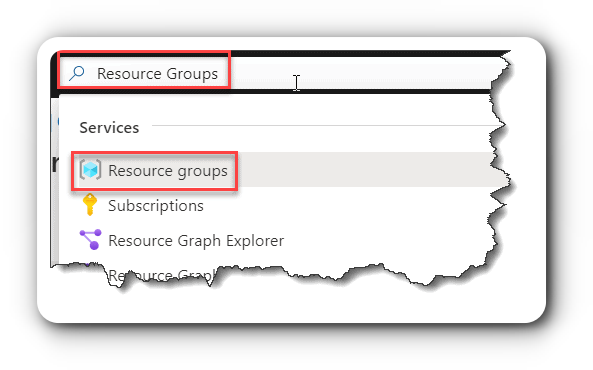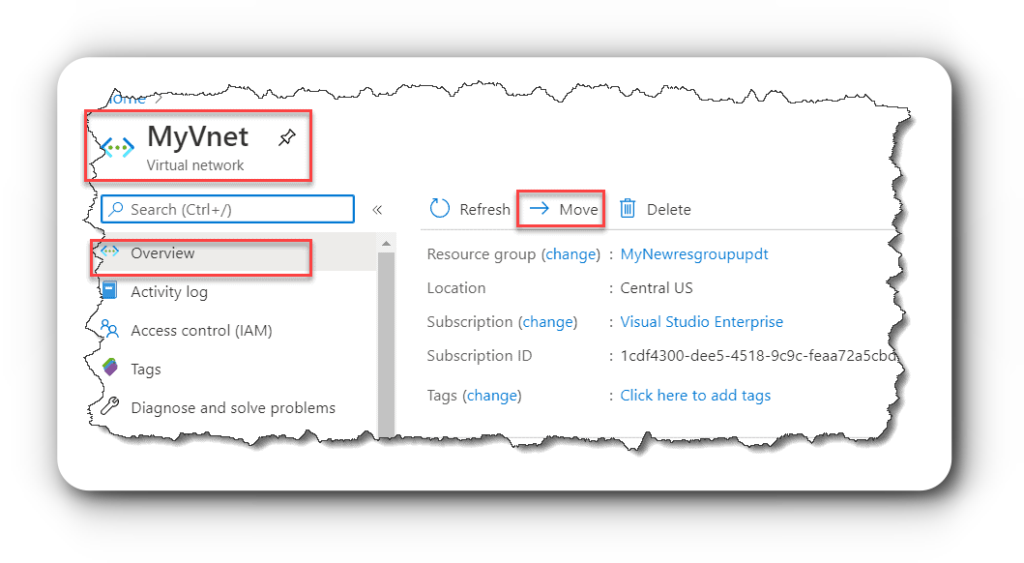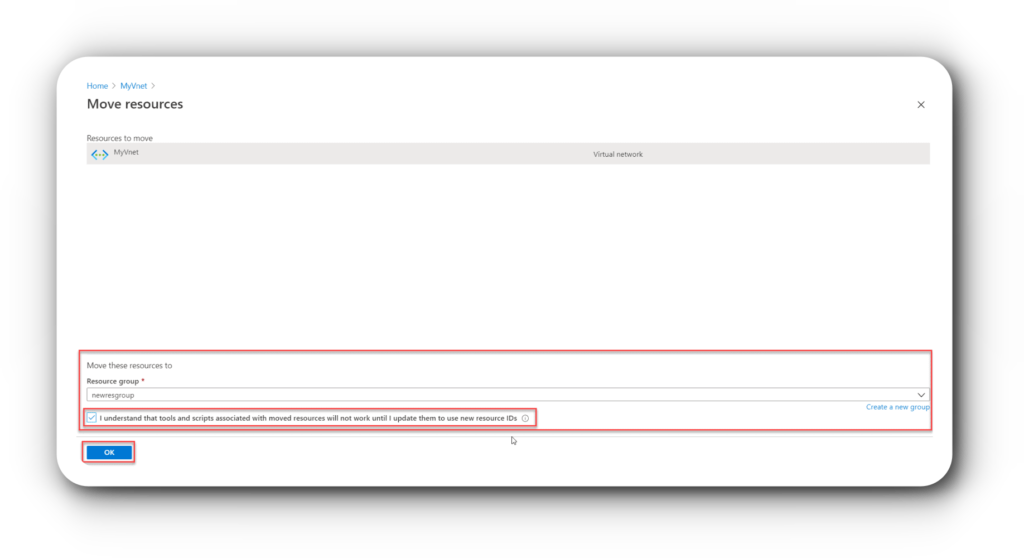In this article, a discussion regarding Microsoft Azure Resource Group will be done and how does it work, what are its best practices, how to create and delete the Azure Resource Group, and many more things will be discussed.
The topics covered in this blog are:
- What is a Resource Group?
- How to organize Azure Resource Group?
- How to use Azure Resource Groups?
- Azure Resource Group Best Practices
- How to Create Azure Resource Group?
- How to Delete Resource Group?
- How to add a user to Azure Resource Group?
- How to change the Azure Resource Group?
- Conclusion
- FAQs
What is a Resource Group?
A Resource Group in Azure is much like any other group of people. When you join a new company, or if you’re creating your own business, it’s important to build a good team around you so that you can feel comfortable and secure putting the future of your project into their hands.
If you are creating a new resource group in a particular region, all resources created in any other regions will be included as well.
The Resource Group is a functionality that lets one group manage multiple resources, which can help with auto-monitoring and management of different resources. Another benefit of Azure is the ability to group various services that belong to an application into a single instance; this is called an Application Services tier, which makes it easy to manage the individual services.
How to organize Azure Resource Group?
Microsoft Azure lets you manage 4 specific areas of management for your resources which include the following:
- Management Groups
- Subscriptions
- Resource Groups
- Resources

Management Groups
Management groups contain multiple subscriptions and provide a mechanism to administer and manage them as a group. All data created under any of the members of that group is shared by all of them.
Subscriptions
A subscription allows a company to manage the number of resources that can be created as well as how much they will cost for each user account or business. Each resource created costs a certain flat rate, which uses up some amount of the plan’s resources.
Resource Groups
A resource is a fundamental unit of Azure. Each resource provides one type of functionality, such as storage, networking, or support for running certain Windows Server roles. The resources that are hosted in your Azure account are collectively known as your Azure solution.
Resources
A resource is a kind of provision that you supply for your customers to use. An example of this would be Azure Virtual Machines, Azure Storage, or the Azure SQL Database option.
Check out: Our Blog post on Azure Data Factory
How to use Azure Resource Groups?
Azure Resource Manager, launched in 2014 and reaching general availability in 2017, simplifies the process of managing resources and allows them to be added together in groups as part of a single provisioning operation. This allows all related resources to be managed together from one easy-to-locate place.
Two resource groups are used for general grouping. If a workload is related to infrastructure as a service, it’s placed in an IaaS-related group. But if the workload is related to a line of business application, it’s placed in a LOB-application specific group.
Although creating a resource group requires you to specify a specific region in which it will be stored, the resources belonging to that resource group may happen to span multiple regions. The requirement that there should be a specific region associated with a resource group comes from the need to store deployment metadata (definitions) in specific locations and does not specifically dictate that resources belonging to it need to be in the same region.
Azure Resource Group Best Practices
The best practices for using Azure Resource Groups are as follows:
- Resources in a group should have a similar lifecycle, as mentioned above. It makes sense to keep resources that go hand-in-hand like having a SQL database and application running on it to manage your website or information.
- For any given Resource Group, resources can be added and removed. However, all of your resources must belong to an Azure Resource Group, so if you remove a resource from one Resource Group, you must add it to another one.
- It is worth noticing that not every resource can be moved to different resource groups.
- It is best practice to keep all resources in the same region because it reduces latency or cross-region data transfer, but if you have a resource that needs to be stored in a different region, there is no way around this.
- Using Resource Groups to Control Access to Your Resources – You should have at least one resource group for every team and use resource groups to manage the access control for each resource.
- All resource groups are deleted when a resource group is deleted
- Group limits: you can deploy up to 800 instances of a resource type in each resource group You’re going to have to find alternatives for deployment and management purposes when exceptions are exceeded.
Also Check: Azure Data Factory Interview Questions
How to Create Azure Resource Group?
To create the Azure Resource Group, the following steps are required to be followed:
1. Sign in to the Azure Portal.
Note: If you don’t have a Microsoft Azure account then check out this blog on how to create Microsoft Azure free account.
2. Choose Resource Groups

3. Click on Add

4. Then enter the following values:
- Subscription- Choose your Azure Subscription
- Resource Group- Enter the new resource group name
- Region- Select the Azure Location

5. Select Review + Create

6. Select Create. It might take a few seconds to create a resource group.

Also Read: Our blog post on Microsoft Azure Certification Path
How to delete Azure Resource Group?
A resource group can be deleted by following the steps below:
1. Glance to the resource group in the Azure portal where the Azure Arc-enabled data services resources have been created.
2. Choose the Delete Resource Group button

3. Confirm the deletion by entering the resource group name and selecting Delete.

Also Check: Our blog post on Azure Traffic Manager.
How to add a user to Azure Resource Group?
Following the steps below will help in adding a user to the Azure Resource Group:
- In the list of Resource groups, open the example-group resource group so we can create a new feature request.
- In the navigation menu, click on Access control (IAM).
- Click the Role assignments tab to see the current list of role assignments.
- Click Add > Add role assignment so that the role can be assigned
- On the Role tab, select the Virtual Machine Contributor role.
- On the Members tab, select yourself or another user.
- On the Review + assign tab, review the role assignment settings.
- Click Review + assign to assign the role.
How to change the Azure Resource Group?
To change the Azure resource group, the following steps are required to be followed:
1. Login to the Azure Portal.
2. Search for the resource that needs to be migrated from its current resource group to the new one.

3. Go to your Settings page and select the section titled Resource Groups. Once you find the group you wish to move the task to, click on the Move To button and select Move to existing resource group from the drop-down menu.

4. Select the group to move the resource to and check the I understand that there will be a short period where tools and scripts used for moving resources will not work until they are updated option.

5. Clicking on “OK” here will move the item to the new Resource Group.
Conclusion
Azure Resource Groups and other cloud-specific structures allow you to effectively manage resources and your applications. With the help of Azure, for example, it is easy to create a controlled structure for your resources: aligning them with your business line of work and its applications.
FAQs
Q1. What is resources group in Azure?
A resource group in Azure is a logical container that holds related Azure resources, such as virtual machines, storage accounts, and databases. It provides a way to manage and organize resources as a single unit within an Azure subscription.
Q2. What are resource groups used for?
Resource groups are used to group and manage resources in Azure. They provide a way to organize resources based on projects, environments (e.g., development, staging, production), or any other logical grouping. Resource groups enable centralized management, deployment, and monitoring of resources within Azure.
Q3. What are the benefits of resource group in Azure?
Resource groups in Azure offer several benefits. Firstly, they provide a consistent and structured approach to organizing resources, making it easier to manage and locate them. Secondly, resource groups enable simplified deployment and resource management as resources within the same group can be created, updated, or deleted together. Additionally, resource groups facilitate role-based access control, allowing fine-grained permissions to be assigned to resources within the group.
Q4. What is the difference between Azure container and resource group?
Azure containers and resource groups serve different purposes. Resource groups are logical containers for organizing and managing Azure resources, while Azure containers (such as Azure Container Instances or Azure Kubernetes Service) are specifically used for running containerized applications. Resource groups provide a higher-level management layer that encompasses various types of Azure resources, while containers focus on application deployment and runtime environments.
Q5. How many resource groups are there in Azure?
The number of resource groups you can have in Azure depends on the subscription and its limitations. By default, there is no hard limit on the number of resource groups you can create within an Azure subscription. However, it is recommended to keep the number manageable and avoid excessive resource group proliferation to maintain organizational clarity and ease of management.

